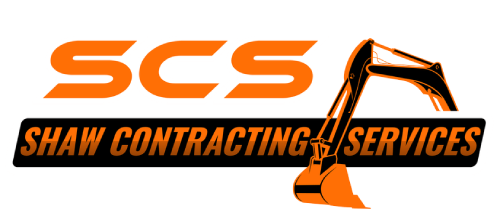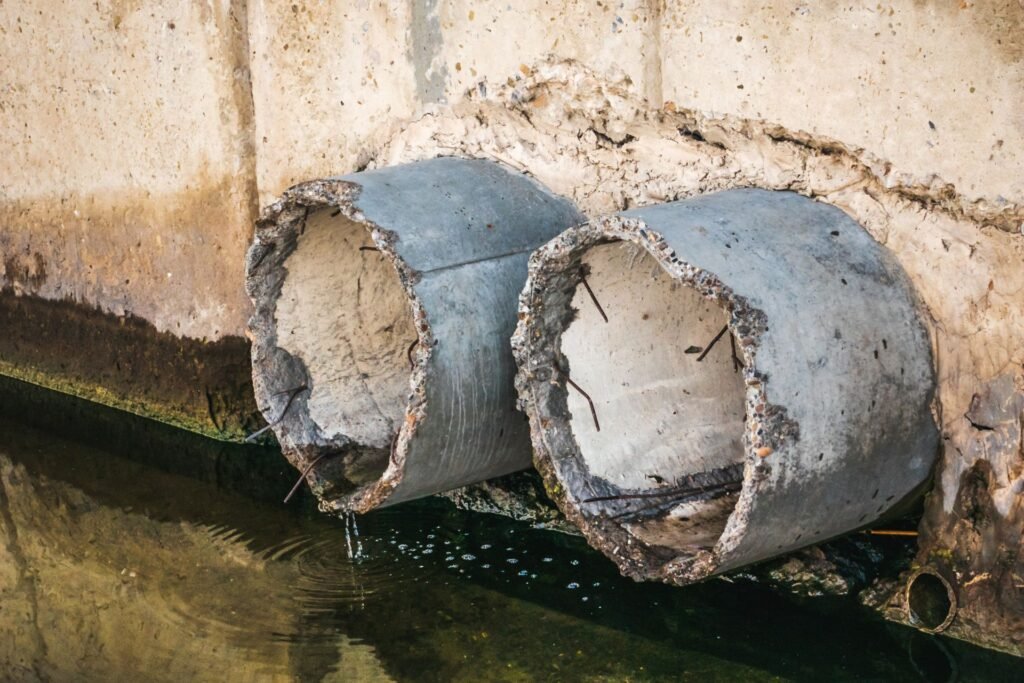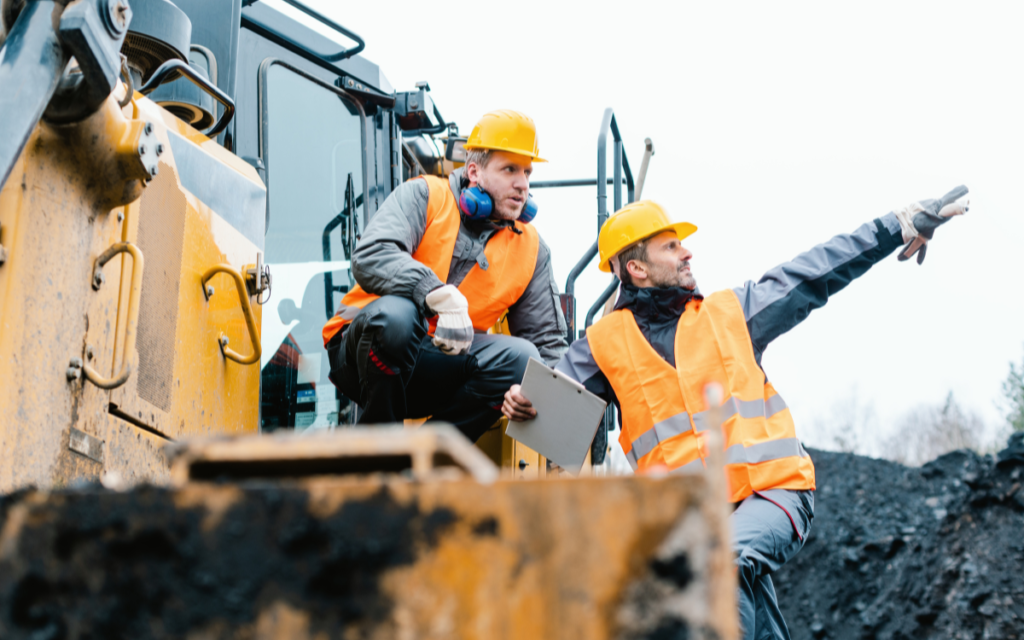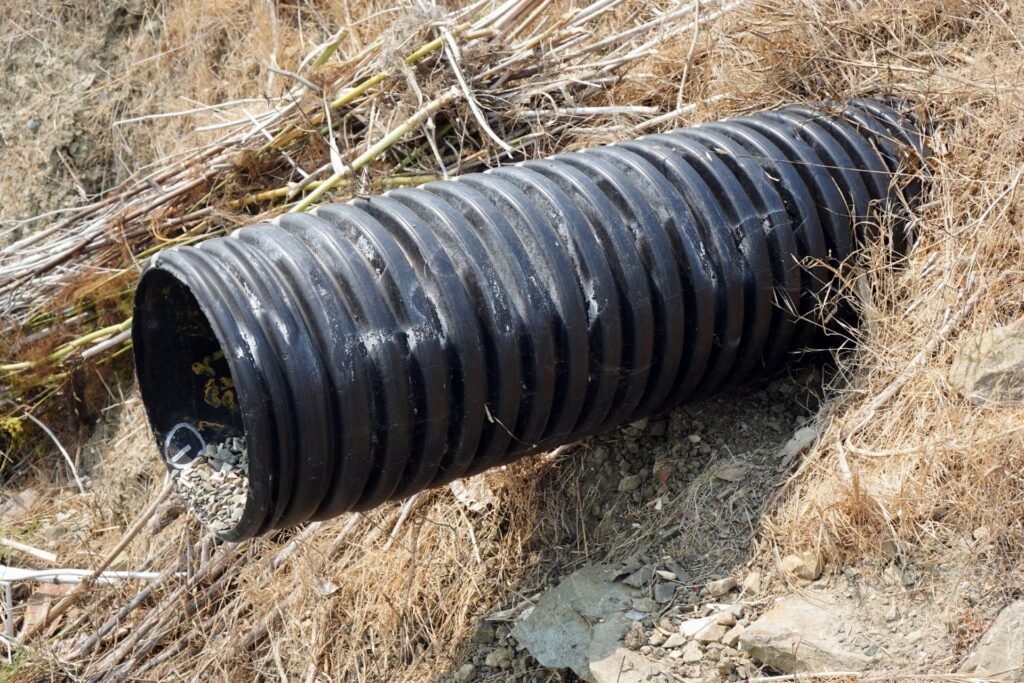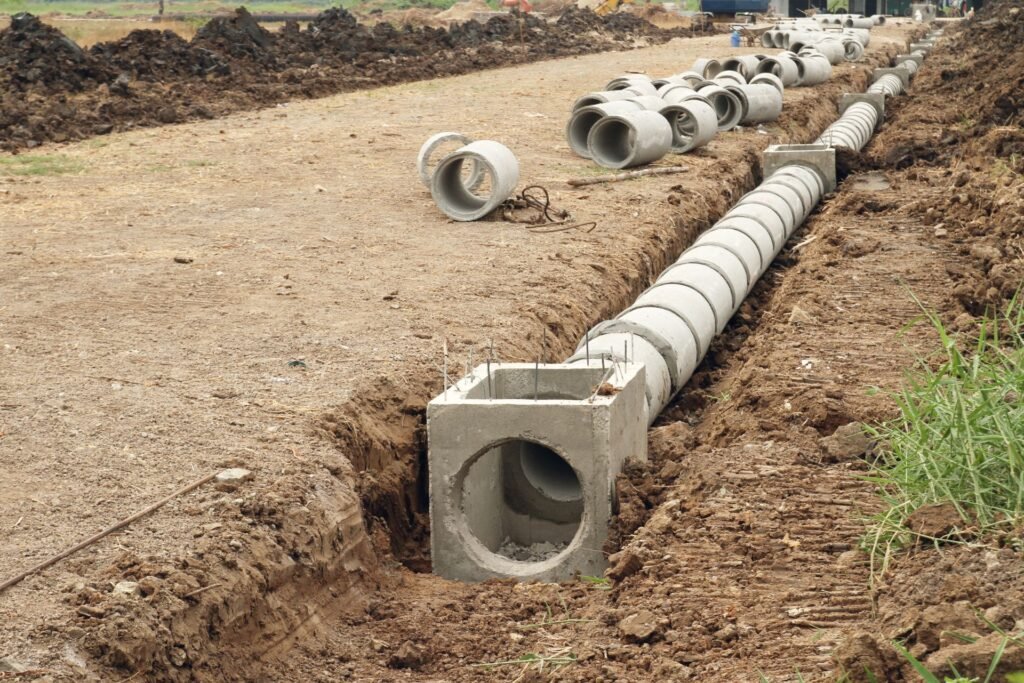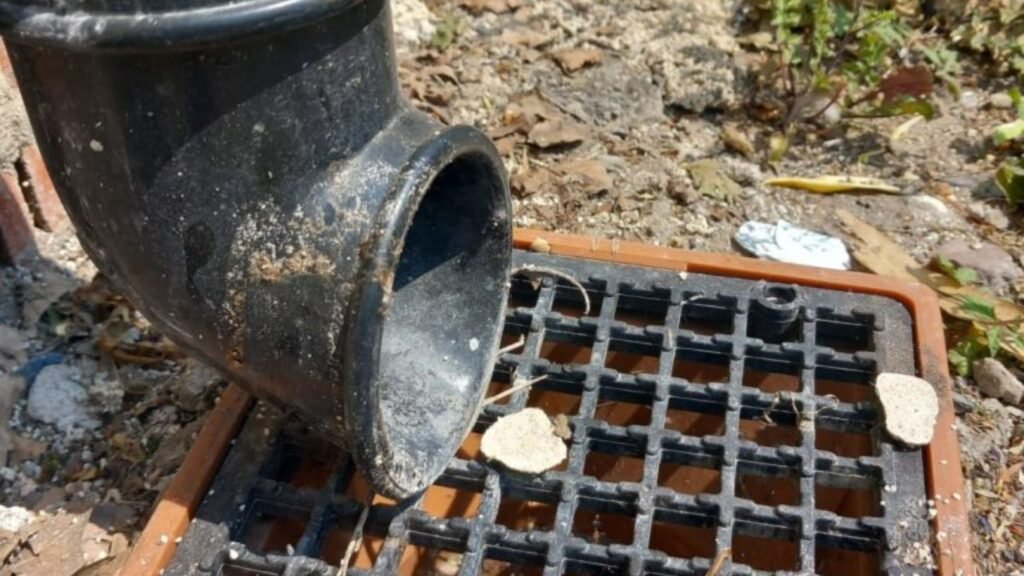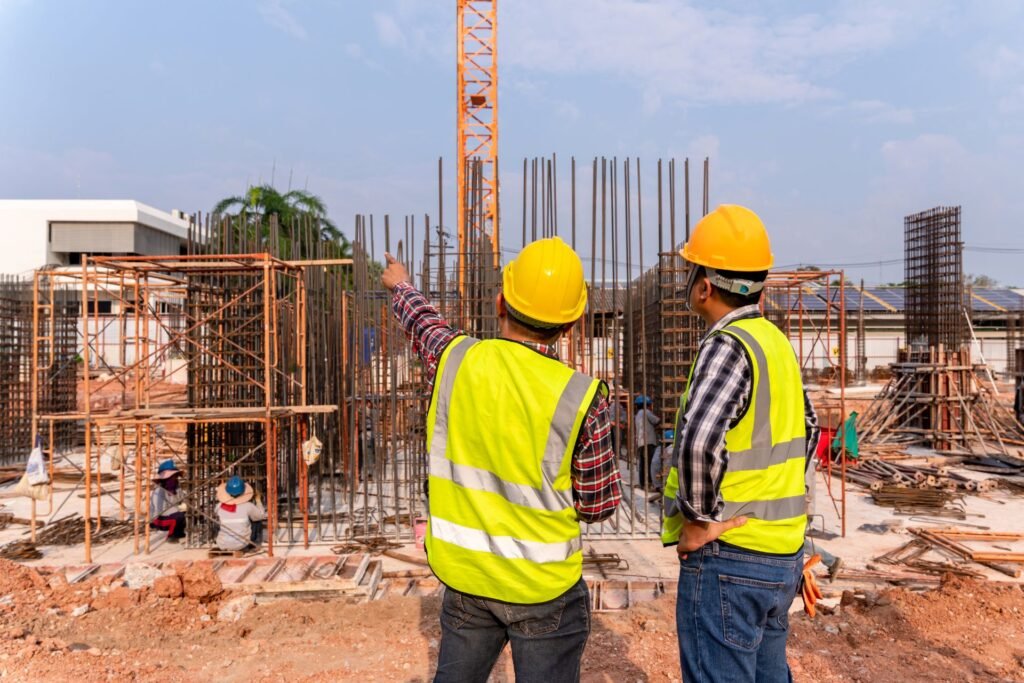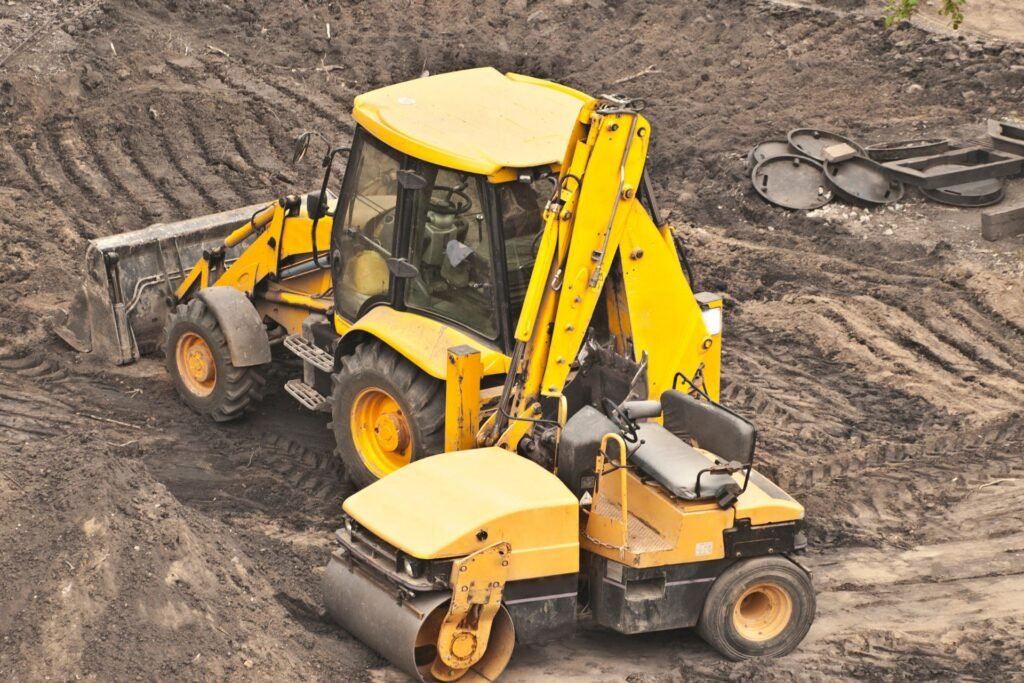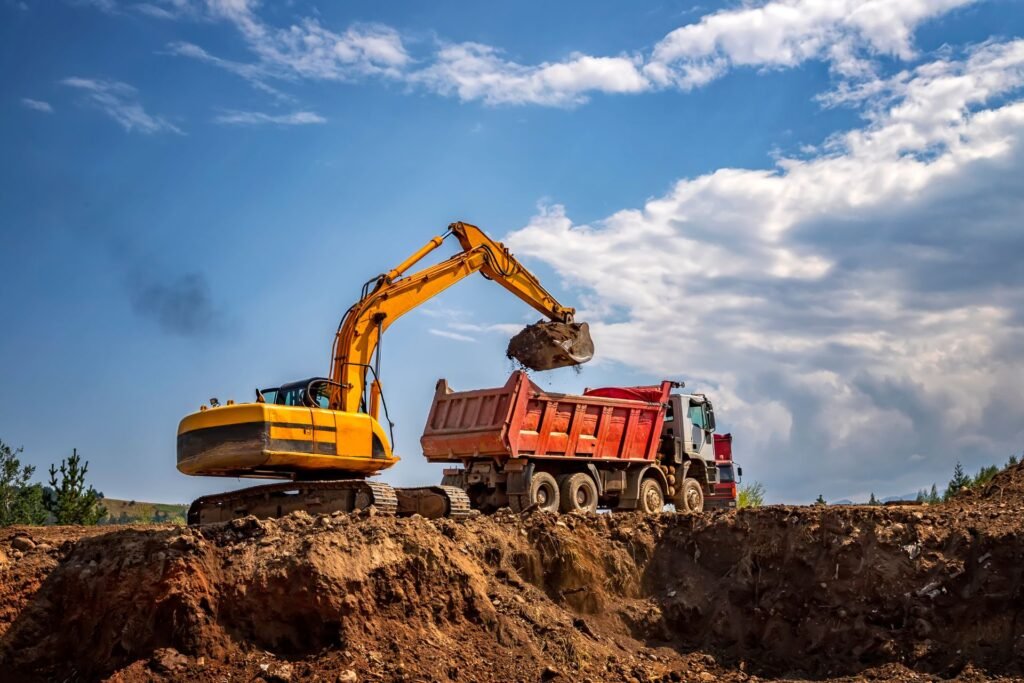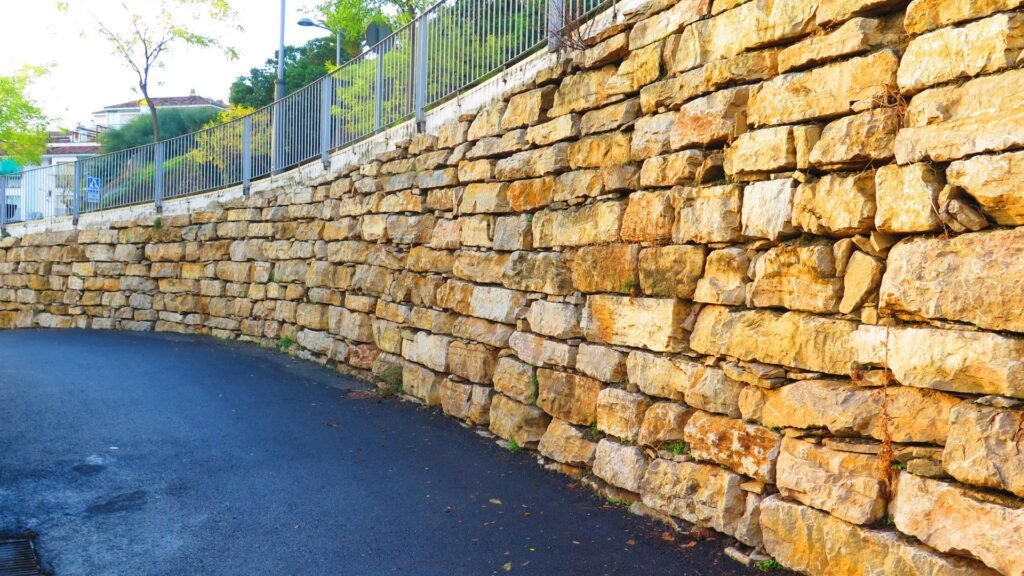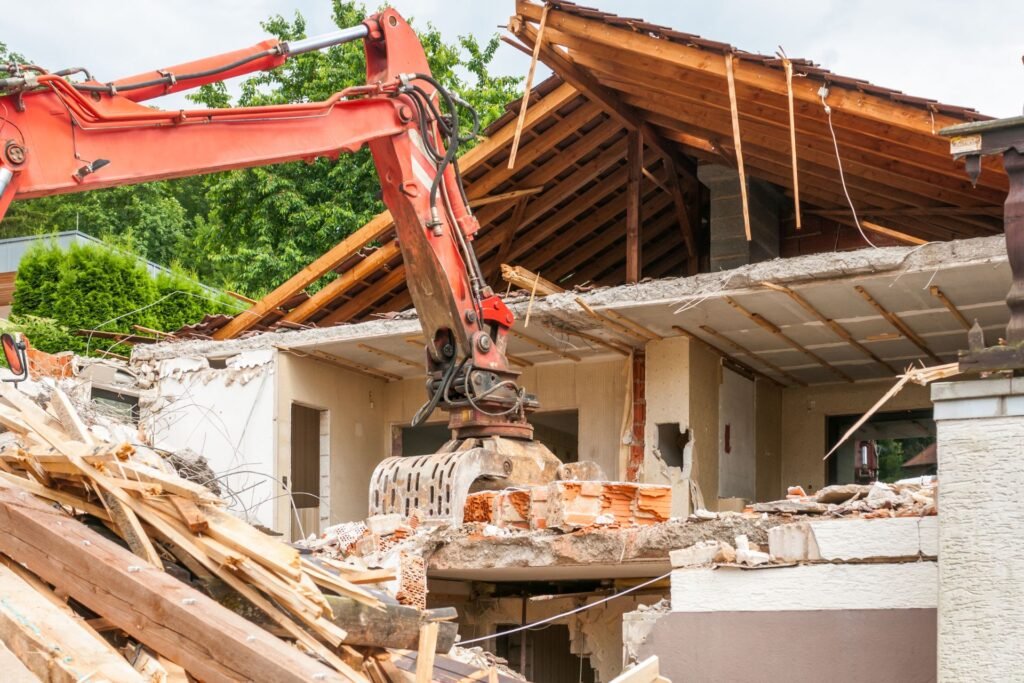Welcome to our comprehensive guide on understanding the difference between sewage and sewerage, two terms that are often confused but have distinct meanings, especially in New Zealand. Whether you’re a homeowner, renter, or simply curious about how waste is managed, this article will clarify the differences between sewage the waste we produce and sewerage the infrastructure that handles its transportation and treatment. In New Zealand, understanding this distinction is crucial for knowing how these systems work, who is responsible for their maintenance, and how they impact our environment. Let’s dive into why it matters and how it affects you.
The key difference between sewage and sewerage is that sewage refers to the waste itself, liquid or solid waste from homes and businesses, while sewerage refers to the system of pipes, drains, and infrastructure that transports sewage to treatment plants. In New Zealand, sewerage systems play a crucial role in managing wastewater to protect public health and the environment.
Table of Contents
Defining Sewage And Sewerage
Understanding the terms “sewage” and “sewerage” is essential for grasping how wastewater is managed, both in New Zealand and globally. These terms are often used interchangeably, but they refer to different aspects of the wastewater system. Let’s break them down to better understand their meanings and roles in daily life.
What is Sewage
Sewage refers to the wastewater and waste materials that flow from homes, businesses, and industries into treatment facilities. It is the raw material that needs to be processed to protect the environment and public health. Sewage consists of a variety of substances, including.
- Human waste: This includes feces and urine that are flushed down toilets.
- Dirty water from homes: Water used in daily activities such as showering, washing dishes, and doing laundry. These activities produce greywater, which contains soap, oils, food particles, and other waste materials.
- Industrial waste: In some cases, sewage may also contain wastewater from businesses and industries, which can include chemicals, oils, and other pollutants.
In New Zealand, sewage is generated in every household through daily activities. For instance, after you take a shower or wash the dishes, the used water, containing soap, dirt, and possibly food scraps, flows into the drainage system, becoming part of the sewage stream. Similarly, flushing the toilet in a Wellington or Auckland home sends human waste into the same sewage system. Sewage is an everyday reality, produced by almost every household and business across the country.
What is Sewerage
Sewerage refers to the system of pipes, pumps, and other infrastructure that transports sewage from where it’s created (homes, businesses, industries) to treatment plants where it is cleaned and processed.
Explanation of the system
Sewerage systems in New Zealand consist of a complex network of underground pipes that run beneath streets, homes, and entire cities. These pipes are connected to pumping stations, which help push the sewage through the system, particularly in areas where gravity alone isn’t enough to move the wastewater.
The process typically begins when sewage is generated in a household or business and flows through pipes into the local sewerage system. From there, it travels through a network of larger pipes toward sewage treatment plants. These plants are designed to filter and treat the sewage, removing harmful contaminants before the cleaned water is either released back into the environment or reused.
Role of councils and water authorities in NZ
In New Zealand, local councils and water authorities manage sewerage systems. For example, in cities like Auckland, Watercare is responsible for overseeing the maintenance and operation of the sewerage network, ensuring that sewage is safely transported to treatment plants. Local councils in other areas play a similar role, managing sewerage services to ensure public health and environmental safety. These organizations monitor the system, perform necessary maintenance, and handle any issues that arise, such as blockages or leaks.
Understanding the distinction between sewage (the waste) and sewerage (the infrastructure) helps us appreciate the intricate systems that keep New Zealand’s water clean and its environments safe.

The Key Differences Between Sewage And Sewerage
When discussing wastewater and its management, two terms often get mixed up: “sewage” and “sewerage.” While they might sound similar, they refer to different aspects of the wastewater process, and understanding the distinction is important, particularly in matters of public health, urban infrastructure, and environmental management.
Sewage = The Waste
The simplest way to differentiate between sewage and sewerage is to start with the substance itself. Sewage refers to the actual waste materials, typically human waste, wastewater from homes, businesses, and industries that flow through pipes and into treatment plants. It’s the combination of liquid and solid waste that needs to be processed and treated before it can be safely released back into the environment.
Sewage is often rich in organic matter, pathogens, and chemicals that, if left untreated, can pollute water sources and harm public health. The process of treating sewage involves removing contaminants, breaking down harmful organisms, and ensuring the water is clean enough to be returned to nature or reused in some form. Without proper treatment, sewage poses a significant risk to ecosystems and communities.
Sewerage = The System
While sewage is the waste, sewerage refers to the network of pipes, pumping stations, and treatment facilities that collect, transport, and manage that waste. Sewerage is the infrastructure behind the scenes, making sure sewage is efficiently moved from homes and businesses to treatment plants where it can be processed.
Think of sewerage as the system that keeps modern cities functioning. It’s the backbone of urban sanitation, ensuring that waste doesn’t build up in the streets or pollute local waterways. Sewerage systems can be complex, involving various types of pipes, tunnels, and pumps designed to handle both everyday wastewater and heavy rain or stormwater. In countries like New Zealand, where environmental concerns are a priority, the sewerage system plays a critical role in maintaining water quality and protecting natural habitats.
Why the Distinction Matters
Understanding the difference between sewage and sewerage isn’t just a matter of semantics, it has real-world implications. Misusing these terms can lead to confusion, especially when discussing public services, repairs, or environmental issues. For example, if someone says the “sewage system” is broken, they could be misunderstood. Are they referring to the physical waste needing treatment, or are they talking about the infrastructure that transports that waste?
In New Zealand, clear communication on this front is particularly crucial due to ongoing concerns about wastewater management and environmental conservation. For instance, a broken sewerage system could lead to raw sewage being discharged into rivers or coastal waters, causing severe pollution and health risks. If people mix up the terms, they might not understand the nature of the problem or the solutions being proposed.
Whether you’re discussing repairs to local infrastructure, government services, or even debating environmental policies, knowing whether you’re referring to sewage (the waste) or sewerage (the system) is key to avoiding misunderstandings and ensuring clear, effective communication.

How Sewage And Sewerage Systems Work In New Zealand
Sewage and sewerage systems are an integral part of New Zealand’s public health and environmental infrastructure, ensuring waste is safely managed from our homes to treatment plants. Let’s explore how these systems work, focusing on the journey of sewage and the structure of New Zealand’s sewerage network.
The Journey of Sewage
Sewage in New Zealand embarks on quite a journey once it leaves your home, be it from flushing the toilet, draining the sink, or using any other plumbing fixture.
When you flush your toilet or drain water from your sink, the wastewater flows through a network of pipes beneath the streets. These pipes collect sewage from homes, businesses, and industrial facilities, leading it to a local wastewater treatment plant. Modern systems in New Zealand are designed with efficiency and safety in mind, ensuring that this journey is as smooth and sanitary as possible.
In most urban areas, homes are connected to what is known as a reticulated sewage system. This system is a combination of gravity-fed pipelines and, in some cases, pumping stations to ensure the sewage reaches treatment plants even in areas with challenging topography.
Once the sewage arrives at the treatment facility, it undergoes several processes. First, large objects and debris are filtered out in a process called screening. Then, the wastewater moves into sedimentation tanks, where solids settle at the bottom. After this, the water is subjected to biological treatment, where microorganisms break down harmful bacteria and pollutants. Finally, the treated water is disinfected, often with chlorine or ultraviolet light, to eliminate any remaining harmful pathogens before being safely discharged into the environment, such as rivers or the ocean. In many cases, the sludge left behind is further treated and repurposed, often as a soil conditioner.
New Zealand prides itself on the high standards of its wastewater treatment processes, ensuring minimal impact on the environment and public health. However, managing sewage is not a one-size-fits-all approach, and rural areas may rely on septic tanks, which function similarly but on a smaller scale.
NZ’s Sewerage Network
New Zealand’s sewerage system plays a critical role in public health and environmental protection. A well-maintained and efficient sewerage network helps prevent contamination of natural water bodies, ensures the safe disposal of wastewater, and reduces the risks of disease outbreaks.
The country’s sewerage infrastructure spans thousands of kilometers of underground pipes, servicing both urban and rural communities. For example, Auckland alone boasts over 7,000 kilometers of wastewater pipes, making it one of the most advanced and extensive sewerage systems in New Zealand. Other key cities like Wellington and Christchurch have similarly sophisticated systems, constantly evolving to meet growing population demands.
Despite these achievements, New Zealand faces several unique challenges when it comes to its sewerage network. Aging infrastructure is one of the most pressing concerns, particularly in older cities where sewer systems were installed decades ago. The pipes in these areas are prone to leaks and breakages, which can lead to sewage overflows and environmental contamination.
Additionally, New Zealand is located in a seismically active region, meaning that earthquake risks pose a significant threat to the integrity of underground sewage systems. The Christchurch earthquakes in 2010 and 2011, for instance, caused substantial damage to the city’s sewerage network, necessitating extensive repairs and upgrades.
There’s also a marked difference between urban and rural areas. Urban centers benefit from centralized and advanced wastewater treatment facilities, while rural communities often rely on septic tanks, which are effective but require regular maintenance to prevent leaching into the environment. The sparsely populated rural regions may lack the resources for comprehensive sewerage systems, posing a challenge to environmental management in those areas.
New Zealand’s sewerage network is a testament to the country’s commitment to public health and environmental preservation. While the system is generally well-maintained and efficient, challenges such as aging infrastructure, seismic activity, and rural disparities continue to require attention and innovation. By investing in modern technology and proactive maintenance, New Zealand aims to ensure its sewerage systems remain resilient for generations to come.
This careful management of wastewater, from household drains to treatment plants, reflects New Zealand’s dedication to keeping its environment clean and its people safe.

Environmental Impact Of Sewage And Sewerage Systems In New Zealand
Sewage and sewerage systems are critical to maintaining a clean, healthy environment in New Zealand. These systems play a vital role in protecting our waterways, oceans, and communities by properly managing and treating waste. Below is a detailed look into how sewage is treated in New Zealand and the essential role sewerage systems play in safeguarding the environment.
The Treatment Process
Sewage treatment is a multi-stage process designed to minimize the environmental impact of wastewater before it is released back into the environment. In New Zealand, sewage treatment plants follow a structured approach to ensure that contaminants are removed as effectively as possible.
Primary Treatment
The primary treatment stage focuses on the physical removal of solid materials from sewage. This includes large objects like sticks, rags, and plastic, as well as smaller particles such as sand and grit. By using screening and sedimentation, these solids are separated from the liquid wastewater. Removing these materials is crucial because, if untreated, they can cause blockages, disrupt ecosystems, and contaminate water sources.
Secondary Treatment
In the secondary stage, biological processes are used to break down organic matter and nutrients in the sewage. Bacteria and other microorganisms naturally break down harmful substances, turning them into more stable and less harmful byproducts. In New Zealand, many treatment plants use activated sludge systems or trickling filters, which provide an ideal environment for these microorganisms to thrive. This stage is critical in reducing the level of pollutants and pathogens in the wastewater.
Tertiary Treatment
The tertiary treatment stage is the final step before the treated water is released back into the environment. This stage involves advanced filtration and disinfection methods to remove any remaining harmful bacteria, viruses, or chemicals. Common methods include chlorination, ultraviolet (UV) light disinfection, or even ozone treatment. However, not all treatment plants, especially in smaller or rural areas, have comprehensive tertiary treatment facilities. These smaller plants might stop after secondary treatment due to cost or scale limitations, although the goal remains to release treated water that is safe for the environment.
Sewerage and Its Role in Protecting NZ’s Environment
A well-functioning sewerage system is crucial for preventing untreated sewage from leaking into New Zealand’s rivers, oceans, and public spaces. These systems are designed to transport wastewater from homes, businesses, and industries to treatment facilities where it can be properly processed before being released into the environment.
When sewerage systems fail due to poor infrastructure or maintenance, the consequences can be severe. Untreated or partially treated sewage can enter local waterways, resulting in water pollution that harms aquatic life, threatens human health, and damages ecosystems. This pollution can also lead to algal blooms, which deplete oxygen levels in the water and create dead zones where marine life cannot survive.
In New Zealand, several cities have taken steps to improve their sewerage systems, demonstrating the positive environmental impact of proper sewage management. For example, Auckland has invested heavily in upgrading its sewerage infrastructure to reduce the frequency of overflows into the Waitematā Harbour during heavy rains. The Central Interceptor project, a massive wastewater tunnel, is designed to divert excess sewage and stormwater, preventing it from spilling into local waterways.
On the other hand, there have been instances where inadequate infrastructure has caused problems. For instance, in 2020, Wellington experienced issues with its aging sewerage system, leading to significant leaks of untreated sewage into the Hutt River. This highlighted the importance of maintaining and upgrading existing infrastructure to prevent environmental damage.
Sewage treatment and sewerage systems are essential for protecting New Zealand’s environment from the harmful effects of untreated wastewater. The treatment process comprising primary, secondary, and tertiary stages ensures that pollutants are minimized before water is returned to nature. Moreover, effective sewerage systems prevent sewage from contaminating rivers, oceans, and public spaces, maintaining the health of New Zealand’s natural ecosystems. With ongoing investment in infrastructure and technology, New Zealand can continue to enhance its wastewater management, safeguarding both the environment and public health.

Common Issues With Sewage And Sewerage In New Zealand
Sewage and sewerage systems are critical to maintaining public health and environmental safety in New Zealand. However, various issues such as blockages, leaks, and system malfunctions can occur, leading to significant problems. Understanding the common causes and knowing how to identify and address these issues can help mitigate damage and reduce risks.
Blockages and Leaks in Sewage and Sewerage Systems
Blockages and leaks are two of the most prevalent issues in New Zealand’s sewage and sewerage systems. Common culprits include wet wipes, cooking grease, tree roots, and aging pipes. While some of these might seem like minor nuisances, their impact on both the sewage system and the surrounding environment can be severe.
Wet wipes
Despite being marketed as “flushable,” wet wipes don’t break down like toilet paper. When flushed, they accumulate in pipes, leading to blockages that obstruct the normal flow of wastewater. Over time, this can cause sewage to back up into homes and streets, creating unsanitary conditions.
Cooking grease
Pouring cooking grease down the drain may seem harmless, but it solidifies as it cools, eventually forming large clogs in pipes. This is a common cause of sewer backups, which can be difficult and costly to fix.
Tree roots
As trees grow, their roots naturally seek out sources of moisture. Sewage pipes, especially older ones, are a prime target. Once inside, roots expand, causing pipe blockages or even cracks, which can lead to leaks and contamination.
Aging pipes
Many sewer systems in New Zealand are several decades old, and over time, pipes can deteriorate, leading to leaks and inefficiencies. These leaks can allow untreated sewage to seep into the environment, contaminating water sources and harming wildlife.
The effects of these blockages and leaks extend beyond just your home’s plumbing. If sewage spills or leaks, it poses serious health risks due to the harmful pathogens present in untreated wastewater. It also contributes to environmental degradation, polluting rivers, streams, and even the ocean, affecting ecosystems and marine life.
How to Spot Problems in Your Home
Early detection of sewage or sewerage issues can save homeowners from expensive repairs and reduce the likelihood of health risks. Here are some practical tips to identify potential problems in your home’s sewage system.
- Slow drains: If water takes longer than usual to drain from your sink, shower, or bathtub, it may indicate a developing blockage in your pipes or main sewage line.
- Bad smells: A foul odor emanating from drains, toilets, or around your property could signal a sewage leak or blockage. The smell of rotten eggs or sulfur is particularly concerning as it may indicate escaping sewer gas.
- Gurgling noises: Unusual sounds, such as gurgling or bubbling coming from drains or toilets, often suggest that air is trapped in the pipes due to a blockage or clog. If this issue isn’t addressed promptly, it can lead to more significant problems like sewage backups.
- Damp or sunken patches in your yard: Wet or soggy patches in your garden or lawn, especially during dry weather, may indicate a leaking sewer pipe underground.
If you notice any of these signs, it’s essential to act quickly to prevent the problem from escalating.
What to Do in Case of a Sewage or Sewerage Problem
If you suspect a sewage or sewerage issue, here are some steps you should take to address the situation effectively.
- Contact a professional plumber: For most sewage and sewerage issues, the first step is to contact a licensed plumber. Plumbers can assess the situation, identify the cause of the problem, and offer solutions such as clearing blockages or repairing damaged pipes.
- Notify your local council: In New Zealand, the responsibility for sewage and sewerage services is often shared between homeowners and local councils. If the problem affects the public sewerage system (such as a blockage or leak in the street), you should contact your local council immediately. Councils are responsible for maintaining public sewers, while homeowners are responsible for the pipes within their property boundaries.
- Check your homeowner’s responsibilities: Homeowners are generally responsible for the maintenance of the sewer pipes running from their property to the point where they connect with the public sewer system. Regular maintenance, such as avoiding flushing inappropriate materials and clearing tree roots, can help prevent problems. If a problem arises within this area, it’s your responsibility to arrange and pay for repairs.
- Consider insurance coverage: In some cases, home insurance may cover damages caused by sewer backups or leaks. It’s worth checking your policy to understand what’s included.
By staying vigilant and acting quickly when signs of sewage or sewerage issues arise, homeowners can prevent serious health risks, protect the environment, and avoid costly repairs.
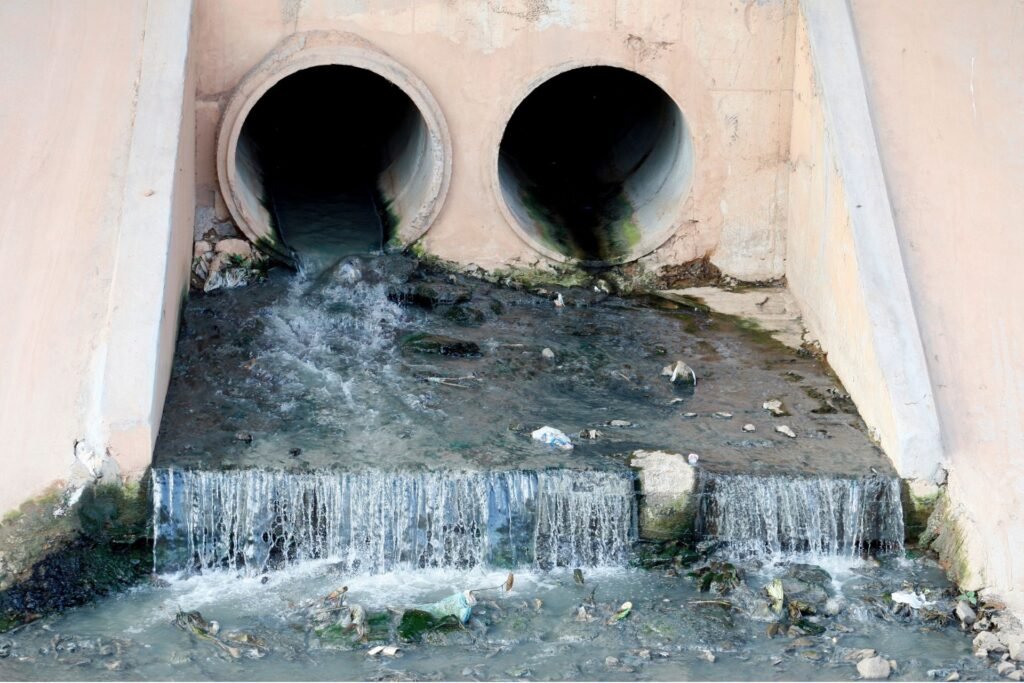
Future Of Sewage And Sewerage In New Zealand
As New Zealand continues to strive for a more sustainable future, the country’s approach to wastewater management is evolving. Key advancements in treatment technology and improvements to the sewerage network are shaping a cleaner, greener future for New Zealand’s waterways and urban environments. Below, we take a closer look at these trends and the innovations that will help New Zealand meet its environmental goals.
Advances in Wastewater Treatment Technology
Emerging technologies in wastewater treatment are set to revolutionize how sewage is processed in New Zealand. Traditional wastewater treatment methods, while effective, are increasingly being supplemented or replaced by more eco-friendly, innovative solutions that prioritize sustainability and resource recovery.
Eco-Friendly Treatment Solutions
New Zealand’s commitment to environmental conservation aligns with global trends toward greener wastewater treatment methods. Technologies such as constructed wetlands, which mimic natural ecosystems to filter and clean wastewater, are gaining popularity. These systems provide a low-energy, cost-effective way of treating sewage while creating biodiversity-friendly spaces. Additionally, anaerobic digestion, which breaks down waste in an oxygen-free environment to produce biogas, is increasingly being adopted. This renewable energy source can help reduce the carbon footprint of wastewater treatment plants.
Water Recycling and Reuse
Another critical aspect of future wastewater management in New Zealand is water recycling. With increasing pressure on freshwater resources, recycling treated wastewater for non-potable uses such as irrigation, industrial processes, and even some municipal applications can significantly reduce water consumption. Some urban centers are exploring advanced filtration and purification technologies like reverse osmosis and membrane bioreactors, which could allow for safe water reuse while meeting stringent environmental regulations.
Nutrient Recovery Technologies
Innovations in nutrient recovery are another exciting frontier in wastewater treatment. These technologies capture valuable nutrients like phosphorus and nitrogen from sewage, transforming them into fertilizers. Not only does this reduce the environmental impact of discharging these elements into waterways, but it also provides a sustainable source of agricultural inputs, contributing to a circular economy.
New Zealand’s ongoing investment in these emerging technologies showcases its dedication to reducing its environmental footprint. By incorporating eco-friendly treatment methods, the country can better meet its sustainability goals, including commitments to climate change mitigation and the preservation of its pristine natural resources.
Improvements to the Sewerage Network
As New Zealand’s population grows and climate change continues to alter weather patterns, the country faces new challenges in managing its sewerage infrastructure. However, with several upcoming infrastructure upgrades and government-backed initiatives, New Zealand is well-positioned to future-proof its sewerage systems.
Infrastructure Upgrades in Key Urban Areas
Large cities like Auckland, Wellington, and Christchurch are at the forefront of sewerage infrastructure upgrades. These cities are seeing significant investment in improving sewerage capacity and resilience, driven by both population growth and the need to replace aging infrastructure. For example, Auckland’s Watercare has embarked on projects like the Central Interceptor, a massive underground tunnel designed to handle wastewater during heavy rain events, reducing the risk of overflows and protecting the city’s waterways.
Government Initiatives for a Sustainable Sewerage System
At the national level, the New Zealand government is stepping up efforts to address wastewater management through initiatives like the Three Waters Reform Programme. This program seeks to overhaul how water services, including sewerage, are managed, ensuring that infrastructure is adequately maintained and upgraded across the country. A significant focus is on rural and small town areas, where older sewerage systems may not be equipped to handle future demands or comply with environmental standards.
Climate Change and Resilience Planning
With climate change comes the increased frequency of extreme weather events like floods and droughts, both of which can impact sewerage systems. Flooding can overwhelm sewage networks, leading to overflows and contamination of waterways, while droughts put stress on water supplies, making water conservation and wastewater recycling even more critical. New Zealand’s local councils and water management agencies are incorporating climate resilience into their infrastructure planning, designing systems that can better handle these fluctuations.
Future-Proofing for Population Growth
New Zealand’s population is projected to grow significantly over the coming decades, placing more strain on existing sewerage systems. Future-proofing these networks requires not just expanding capacity, but also ensuring they are built to handle future needs, such as incorporating technologies that facilitate water reuse, renewable energy generation, and nutrient recovery. This long-term approach will ensure that New Zealand’s sewerage systems remain robust and sustainable well into the future.
The future of sewage and sewerage in New Zealand is centered around innovation and sustainability. With advancements in wastewater treatment technology and strategic improvements to the sewerage network, the country is well on its way to creating a more resilient and environmentally responsible system. As New Zealand continues to embrace these changes, it will be better equipped to meet the challenges posed by climate change and population growth, ensuring that its natural resources are protected for future generations.

FAQs: About Difference Between Sewage Vs Sewerage NZ
What is the main difference between sewage and sewerage?
Sewage refers to the waste material, including human waste, household water, and industrial byproducts, that flows through pipes from homes and businesses. Sewerage, on the other hand, refers to the infrastructure pipes, drains, and treatment plants that transports and treats sewage. Essentially, sewage is the waste, while sewerage is the system.
Why is it important to understand the difference between sewage and sewerage in New Zealand?
Understanding the difference is important because it helps in recognizing who is responsible for what. Homeowners need to know how to maintain their sewage connections, while local councils manage sewerage systems. Misunderstanding these terms can lead to confusion when dealing with blockages, repairs, or environmental issues.
What are some common problems with sewage systems in New Zealand homes?
Common problems include blockages caused by items like wet wipes, cooking fats, and tree roots that can obstruct sewage flow. These blockages can lead to overflows, unpleasant odors, or even damage to the sewerage system if left unchecked.
How does the sewerage system work in New Zealand?
In New Zealand, the sewerage system transports sewage from homes and businesses through a network of pipes to treatment facilities. Once treated, the wastewater is discharged safely into the environment or reused. The sewerage infrastructure is typically managed by local councils or water authorities.
What happens if sewage isn’t treated properly?
Untreated sewage poses significant health risks, contaminating water sources and spreading diseases. In New Zealand, improperly treated sewage can pollute rivers, lakes, and coastal waters, damaging both public health and the environment. This is why proper treatment and maintenance of sewerage systems are crucial.
What can homeowners do to prevent sewage blockages?
Homeowners can prevent blockages by avoiding flushing non-biodegradable items (like wet wipes, feminine hygiene products, or nappies) and properly disposing of cooking fats, oils, and grease. Regular maintenance of pipes and drains can also help prevent blockages.
Who is responsible for maintaining the sewerage system in New Zealand?
Local councils and water authorities are typically responsible for maintaining the public sewerage system, which includes pipes, treatment plants, and other infrastructure. Homeowners are responsible for maintaining the sewage pipes on their property, up to the point where they connect to the public sewerage network.
How is sewage treated in New Zealand?
Sewage in New Zealand is treated in multiple stages. First, solid waste is removed (primary treatment), then biological processes break down organic matter (secondary treatment). Finally, the wastewater is disinfected (tertiary treatment) before being released into the environment or reused. Some smaller areas may not have full treatment facilities, and their systems might involve septic tanks.
What are the environmental risks of a poor sewerage system?
A poorly maintained sewerage system can lead to untreated sewage leaking into the environment, polluting water bodies and affecting marine life. This can result in contaminated drinking water, unhealthy beaches, and damaged ecosystems, particularly in New Zealand’s sensitive coastal and freshwater areas.
Is New Zealand upgrading its sewerage systems to cope with future challenges?
Yes, many New Zealand cities and regions are investing in upgrading sewerage systems to handle increasing populations and the effects of climate change. These upgrades aim to improve the infrastructure’s resilience, reduce the environmental impact, and ensure continued safe treatment of sewage.
Conclusion
In conclusion, it’s essential to understand the key differences between sewage and sewerage, especially in everyday conversations and public matters in New Zealand. While sewage refers to the waste and wastewater generated by households and industries, sewerage is the infrastructure that transports this waste to treatment facilities. Recognizing these distinctions can help you better navigate discussions about water management and infrastructure. Staying informed, promptly reporting any issues you observe, and regularly maintaining your home’s systems are vital actions to ensure these networks function smoothly. A well-maintained sewage and sewerage system not only helps protect the environment but also contributes to a cleaner and healthier New Zealand, benefiting everyone in the long run.
About the Author:
Mike Veail is a recognized digital marketing expert with over 6 years of experience in helping tradespeople and small businesses thrive online. A former quantity surveyor, Mike combines deep industry knowledge with hands-on expertise in SEO and Google Ads. His marketing strategies are tailored to the specific needs of the trades sector, helping businesses increase visibility and generate more leads through proven, ethical methods.
Mike has successfully partnered with numerous companies, establishing a track record of delivering measurable results. His work has been featured across various platforms that showcase his expertise in lead generation and online marketing for the trades sector.
Learn more about Mike's experience and services at https://theleadguy.online or follow him on social media:
